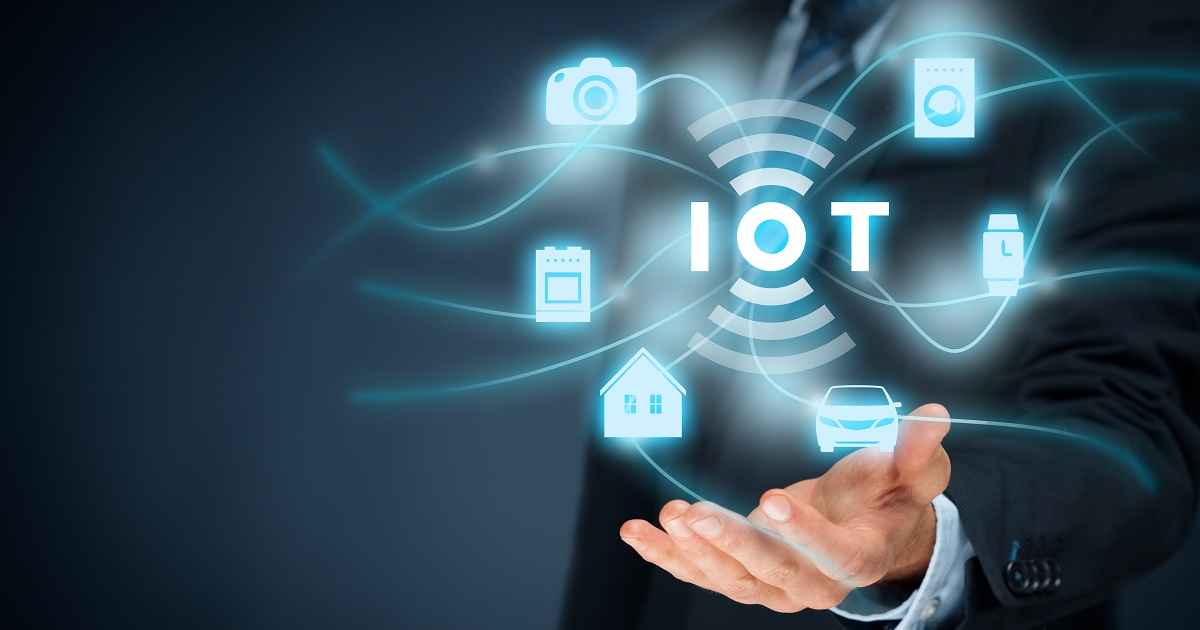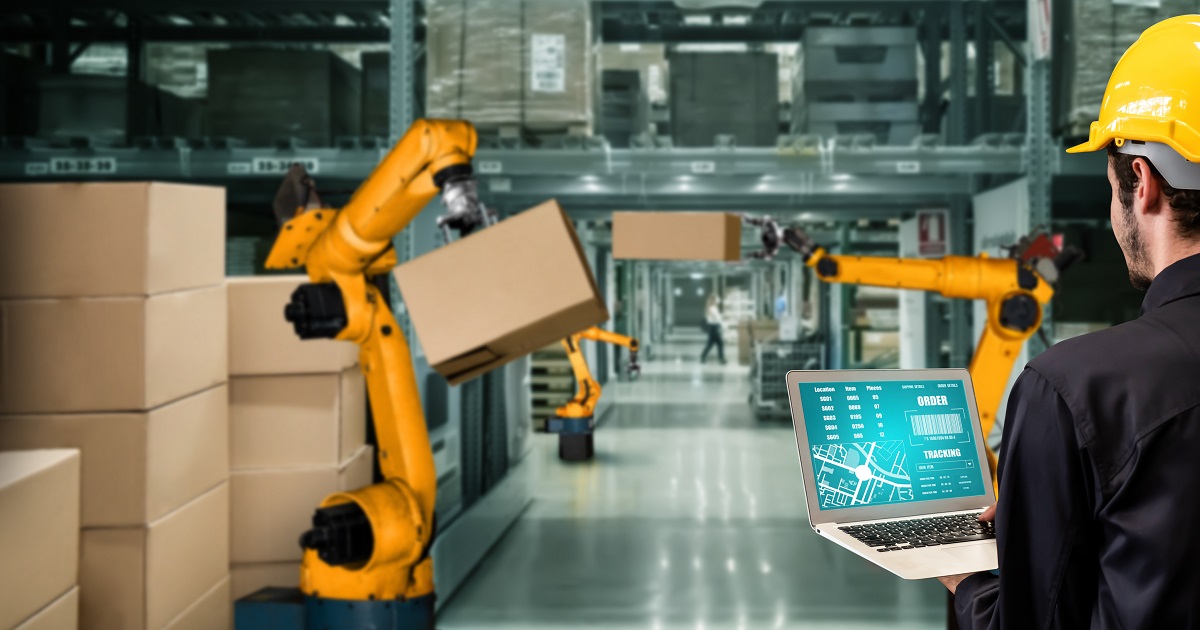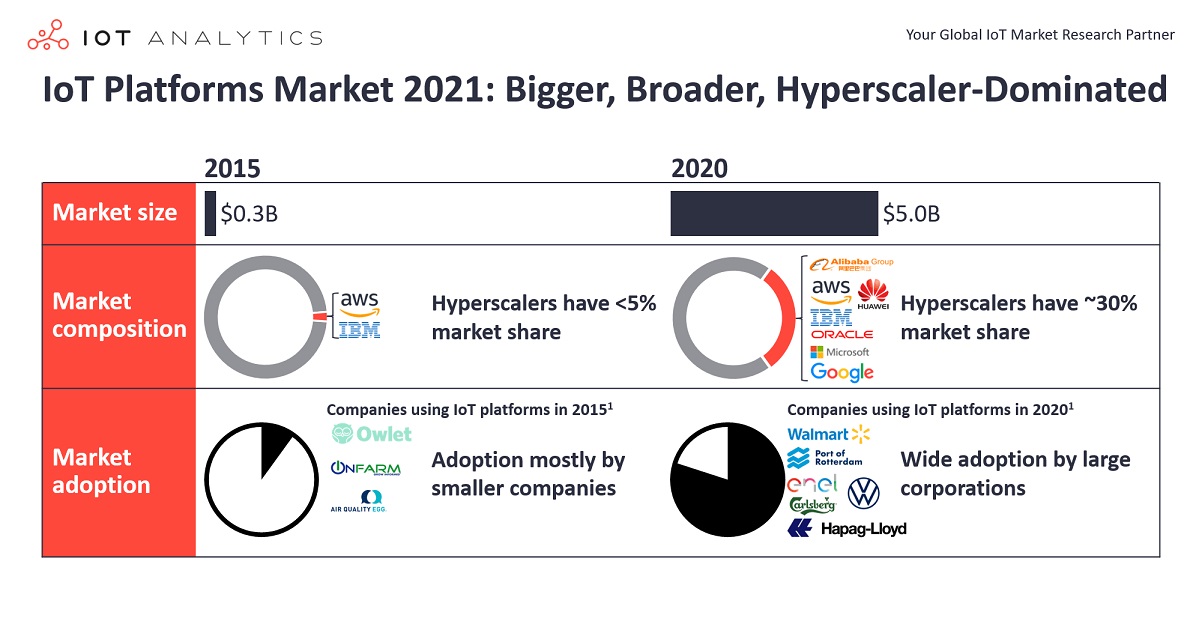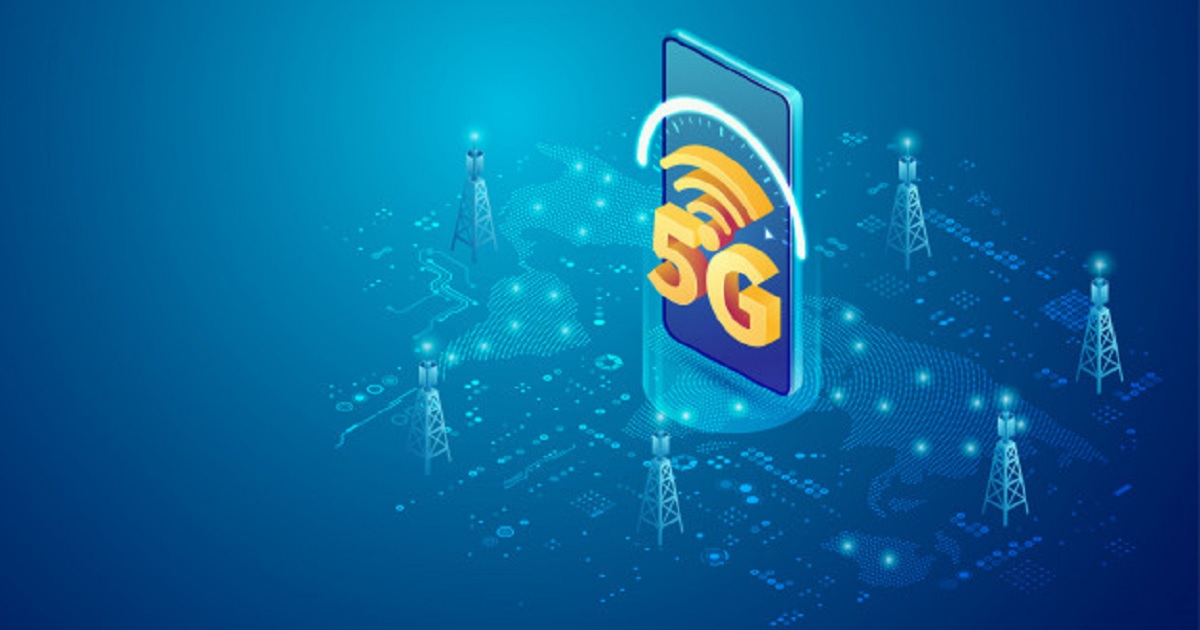
Industrial IoT, IoT Security
Article | July 12, 2023
5G trends are shaping the future of various technologies, from the Internet of Things to virtual reality. Learn more about the top trends in 5G to stay ahead of the competition in this sector.
Contents
1 The Current State of IoT Data Security
2 Top Trends in IoT Data Security in 2023
2.1 Emergence of AI-powered Security Solutions
2.2 Potential of Blockchain Technology
2.3 Growing Use of Zero-trust Security Frameworks
2.4 Greater Emphasis on End-to-end Encryption
2.5 Industry and Government Collaboration
3 Conclusion
As the Internet of Things (IoT) continues to rapidly expand, data security has become a critical concern for businesses and consumers alike. With recent high-profile breaches and cyberattacks, the latest trends in IoT data security focus on implementing stronger encryption and authentication protocols, as well as enhancing device-level security measures to protect sensitive data from potential threats.
1 The Current State of IoT Data Security
The growing adoption of IoT has led to a digital transformation in the way businesses operate. IoT technology has enabled organizations to collect and analyze vast amounts of data in real-time, allowing for improved decision-making, increased operational efficiency, and enhanced customer experiences. Despite these benefits, organizations are currently facing significant IoT data security challenges that must be addressed to fully realize the potential of this technology.
Companies recognize unauthorized access (43%), data privacy (38%), and data integrity (31%) as top IoT security challenges.
(Source: Statista)
Businesses are actively addressing these security challenges by investing in IoT and data security solutions. The global market for IoT data security continues to grow, and companies are increasingly investing in strategies for data security in the IoT. To secure access to mission-critical connected devices and sensitive data, it is imperative for businesses to keep track of IoT trends in data security.
2 Top Trends in IoT Data Security in 2023
2.1 Emergence of AI-powered Security Solutions
AI-powered security systems can rapidly detect and respond to attacks, reducing the likelihood of significant damage to IoT devices or networks. In particular, its ability to analyze vast amounts of data in real-time and identify anomalies or potential security threats makes AI a vital component of an IoT data security strategy.
Detecting an IoT security breach in progress is possible with AI security systems, which identifies unusual behavior by analyzing data patterns from IoT devices. AI can also be used to diagnose potential vulnerabilities in IoT devices and networks, allowing organizations to take proactive measures to address them before they are exploited.
The pattern recognition capabilities of AI also help secure IoT technology through predictive analytics. By analyzing past data breaches and attacks, AI systems detect potential cyberattacks and develop predictive models to detect and respond to them proactively.
AI-driven security systems have the potential to streamline incident response by lessening the load on cybersecurity teams and reducing response time. The ability to adapt and learn from a previous cyberattack allows machine learning (ML) algorithms to create novel strategies that prevent similar attacks in the future.
AI represents a significant development in addressing IoT security concerns since it provides sophisticated capabilities to protect IoT networks and devices that conventional security measures cannot provide. AI-enabled security systems deliver immediate identification, reaction, and deterrence of possible threats, which is why they will be critical in ensuring data security in the IoT.
2.2 Potential of Blockchain Technology
Blockchain's unique features, such as decentralization, immutability, and cryptographic security, provide a robust framework for secure communication and data sharing among IoT devices. By leveraging blockchain technology, businesses can ensure their IoT data's integrity, confidentiality, and authenticity.
One of the key advantages of using blockchain for IoT data security is its decentralized nature. Blockchain networks are distributed and run on a peer-to-peer basis, making it difficult for attackers to compromise the network. This also makes it an ideal solution for recording and securing data from multiple access points, such as IIoT systems.
Additionally, blockchain networks are designed to be immutable, making them an ideal solution for IoT data security and providing a tamper-proof and transparent ledger for recording data flow. This can help enterprises identify and mitigate security threats more quickly and efficiently, reducing the risk of cybersecurity incidents. A research paper published in Wireless Networks highlights the advantage of using a Blowfish Blockchain Model to enable IoT data sharing security, particularly for multimedia content.
Blockchain technology is a promising solution for securing IoT data. Its unique features, including decentralization, immutability, and cryptographic security, make it an ideal candidate for many IoT use cases. This technology can potentially transform data security for IoT devices by offering the IoT sector the solution it requires.
2.3 Growing Use of Zero-trust Security Frameworks
Zero-trust frameworks ensure that only authorized devices and users can access sensitive data and systems, protecting against insider threats and external attacks. This is especially important in IoT environments, where devices may lack traditional security measures like firewalls and antivirus software.
Device identity management is a critical component of zero-trust security for IoT data. Only recognized devices are allowed access to a network or data by leveraging processes and technologies that authenticate device identity. With Zero Trust, any connected device must be authorized before accessing any resources, including data.
By closely monitoring and managing access, businesses can maintain the security of the IoT. This protects against threats that exploit weak device identity management. Overall, zero-trust security frameworks are essential for safeguarding IoT data from malicious actors and protecting the integrity of IoT ecosystems.
2.4 Greater Emphasis on End-to-end Encryption
IoT poses a threat to data security when users do not take proper measures to protect the data generated. End-to-end encryption provides a strong layer of protection against unauthorized access, interception, and other cyber threats by encrypting data at the source, during transmission, and at rest.
IoT devices collect and process a wide range of sensitive data, from personal information and financial data to critical infrastructure and medical records. This data is often transmitted over networks and shared with cloud services, and the risk of cyberattacks during transmission cannot be ignored.
End-to-end encryption can provide a strong layer of protection by encrypting data at the source, working to improve the limited data security of the IoT. As the use of IoT devices continues to grow, implementing end-to-end encryption will become increasingly important for ensuring the security and privacy of sensitive IoT data.
2.5 Industry and Government Collaboration
In late 2021, the UK and Singapore governments became the first to announce obligatory security requirements for specific categories of IoT devices. Due to IoT data security risks, other countries have also defined guidelines, best practices, certifications, or labeling efforts for IoT devices. However, adoption among IoT device makers and vendors has been slow.
The National Institute of Standards and Technology (NIST) has been working on establishing cybersecurity guidelines for IoT devices. In June 2022, NIST incorporated consumer IoT cybersecurity criteria into its family of IoT cybersecurity guidance. NIST is also working with the IoT industry to design, standardize, and test solutions for IoT security controls.
By discussing IoT device security concepts and establishing guidelines in collaboration, the industry and the government can foster adoption of general methods to protect IoT devices from cybersecurity breaches. Such cooperation can be crucial in ensuring that IoT devices are secure from cyber threats and that IoT device makers and vendors adopt best practices for IoT device security.
3 Conclusion
The trends in IoT data security showcase several proactive measures that can be taken to protect sensitive data in a rapidly evolving technological landscape. In addition, organizations are moving towards a more comprehensive approach to IoT data security with the emergence of AI-powered security solutions, blockchain technology, and the shift to zero-trust security frameworks.
As IoT devices continue to proliferate, organizations must prioritize security and data protection to prevent data breaches and cyberattacks. This emphasizes the need for collaboration between industry and government to strengthen security measures and improve IoT device security by building with a ‘secure by design’ approach.
Read More

Industrial IoT, IoT Security
Article | July 11, 2023
Introduction
Automation, interconnectivity, machine-learning, and real-time data are part of Industry 4.0, a new phase in the Industrial Revolution. Industry 4.0, which includes IIoT and smart manufacturing, combines physical production and operations with smart digital technologies. It creates a more holistic and linked environment for manufacturing and supply chain management organizations.
In today's production environment, "automation" has a new, more advanced meaning than it has in the past. Industry 4.0 refers to the necessity of lean, efficient operations and the function of sustaining and improving production. In contrast, IIoT distinguishes manufacturing gadgets from consumer products that can connect wirelessly to internal networks and the internet.
IIoT Powering the Fourth Industrial Revolution
Manufacturing, logistics, oil and gas, transportation, mining, aviation, energy, and other industries use the IIoT. Its main goal is to improve operations, mainly through process automation and maintenance. IIoT capabilities improve asset performance and allow for improved maintenance management. The introduction of Industry 4.0 technologies marked a significant milestone in the human-machine relationship's history. I4.0 was first talked about in 2011. Since then, it has proliferated because of new technologies such as cyber-physical systems, IT/OT convergence, AI/ML, Blockchain, and AR/VR.
Data is at the heart of the Fourth Industrial Revolution. The growth of the Internet of Things (IoT) is one of the main reasons behind this. The IoT is making a significant contribution in making businesses smarter and improving their workflows. Moreover, more data is being made and used by connected devices than ever before, from the home to the factory.
In order to thrive in the fourth industrial revolution, businesses must embrace new technologies. The general structure of IIoT applications is defined by standards-based industrial system architectures such as the Industrial Internet Consortium's Reference Architecture. Sensors and IoT devices, IoT middleware platforms, IoT gateways, edge/cloud infrastructures, and analytics applications are all part of the stack.
The Future of the IIoT
The Industrial Internet of Things (IIoT) is primarily regarded as one of the most significant current and future trends influencing industrial companies.
To comply with new rules, industries are rushing to upgrade their systems, machinery, and equipment. This is necessary to keep up with market volatility and deal with disruptive technologies.
Safety, efficiency, and profitability have all improved dramatically in industries that have adopted IIoT. As IIoT technologies become more widely adopted, this tendency is projected to continue.
Conclusion
The fourth industrial revolution has drastically altered our perceptions of things in the workplace. At a rapid rate, capitalists are becoming more interested in sophisticated ideas.
The way forward is to embrace existing and emerging technology throughout fundamental operations to unleash more enticing possibilities. It emphasizes the importance of comprehending the impact collaborative ecosystems can have as well as how they will become a major differentiator for generating value with a better-trained workforce.
Read More

IoT Security
Article | July 5, 2023
5 years ago, when we forecasted that the IoT platforms market would have a 5-year compound annual growth rate (CAGR) of 35%, we wondered if our growth projection was unrealistically high.
5 years later, it has become apparent that the forecast was actually too low. The IoT Platforms market between 2015 and 2020 grew to be $800 million larger than we forecasted back in early 2016, resulting in a staggering 48% CAGR.
Comparing what we “knew” back in 2016 to what we know today provides some clues as to why the market exceeded expectations so much. 5 years ago, no one really knew what an IoT platform was, let alone how big the market would be, which business models would work, how architectures would evolve, and which companies/industries would adopt them. The only thing that was “known” was that the IoT platforms market was a billion dollar “blue ocean” opportunity ready to be captured by innovative companies.
Read More

Article | June 25, 2020
The year 2020 was supposed to be a breakthrough year for many technologies but, most businesses have now been forced back into building an infrastructure to transit their workforce to work remotely and ensure continuity of workflow. Nevertheless, an unprecedented set of events have pushed several industries to accelerate the adoption of technologies as they continue to work from home.
5G and Wi-Fi 6 are two tech advancements that have been turning eyes around the world since their introduction. The two wireless technologies are well on their way to revolutionize the Internet of Things as businesses move fast towards digitization and the world is excited.
Table of Contents:
- Wi-Fi 6: A Breakthrough in Wireless Technology
- 5G: For a Better Connected World
- How are Wi-Fi 6 and 5G Transforming the IoT?
- 5G and Wi-Fi 6: Rivals or Allies?
Wi-Fi 6: A Breakthrough in Wireless Technology
The next-generation Wi-Fi with boosted speed was introduced last year to meet the demand for faster internet amongst the rising internet users. But, Wi-Fi 6 is simply more than a tweak in the speed.
Technically called 802.11ax, Wi-Fi 6 is the advancement in the wireless standard doing the same basic things but with greater efficiency in the device-dense areas, and offering much greater bandwidth than its predecessor 802.11ac or Wi-Fi 5. Wi-Fi 6 promises a speed up to 9.6 Gbps up four times than that of Wi-Fi 5 (3.5Gbps). In reality, this is just a theoretical maximum that one is not expected to reach. Even still, the 9.6Gbps is higher speed and doesn’t have to go to a single device but split up across a network of devices.
A new technology in Wi-Fi 6 called the Target Wake Time (TWT) lets routers set check-in times with devices, allowing communications between the router and the devices. The TWT also reduces the time required to keep the antennas powered to search for signals, which in turn also improves battery life.
Wi-Fi 6 also comes with a new security protocol called WPA3, making it difficult to hack the device passwords by simple guesswork.
In short, Wi-Fi 6 means better speeds with optimized battery lives, and improved security.
5G: For a Better Connected World
5G is the next in line to replace 4G LTE. While Wi-Fi covers small scale internet requirements, cellular networks like 5G are here to connect everyone and everything virtually on a larger scale.
The technology is based on the Orthogonal frequency-division Multiplexing (OFDM) that reduces interference by modulating a digital signal across several channels. Ability to operate in both lower bands (like sub-6 GHz) and mmWave (24 GHz and above), 5G promises increased network capacity, low latency and multi-Gbps throughput. 5G also uses the new 5G NR air interface to optimize OFDM to deliver not just better user experience but also a wider one extending to many industries, and mission-critical service areas.
The 5G technology, in a nutshell, has brought with it ultra-high speeds, increased and scalable network capacity, and very low latency.
How are Wi-Fi 6 and 5G Transforming the IoT?
5G and Wi-Fi 6 will fill up the speed gaps that our existing networks are not able to especially, in crowded homes or congested urban areas. It's not just about the speed. The two wireless technologies will increase network capacity and improve signal strengths.
On the business front, 5G and Wi-Fi 6 are both living up to the hype they created since their introduction.
Wi-Fi 6 has emerged, as the enabler of converged IoT at the edge. It has put IT into OT applications, connected devices and processed data from devices such as IP security cameras, LED lighting, and digital signage with touch screen or voice command. Wi-Fi 6 can now be used in office buildings for intelligent building management systems, occupancy sensors, access control (smart locks), smart parking, and fire detection and evacuation.
It’s (Wi-Fi 6) built for IoT. It will connect many, many more people to mobile devices, household appliances, or public utilities, such as the power grid and traffic lights. The transfer rates with Wi-Fi 6 are expected to improve anywhere from four times to 10 times current speeds, with a lower power draw, i.e. while using less electricity.
- Tom Soderstrom, IT Chief Technology and Innovation Officer at NASA’s Jet Propulsion Laboratory (JPL)
Similarly, 5G will open doors for more devices and data. It will increase the adoption of edge computing for faster data processing close to the point of action. The hype around 5G is because of the three key attributes it comes with: enhanced mobile broadband (eMBB), ultra-reliable low-latency (uRLLC), and massive IoT device connectivity (mMTC). But there is the fourth attribute that sets it apart from its predecessor: use of a spectrum that operates at the low-end frequency range (typically 600 MHz). Called as ‘low-band 5G’, it delivers high speeds with signals that go for miles without propagation losses and ability to penetrate obstacles. The 5G operates in the new millimetre-wave bands (24 to 86 GHz) delivering more capacity to enable many low-power IoT connections.
If we were to point down the benefits, these two wireless technologies are bringing to the Internet of Things those would be:
Increased Human-Device Interactions
Increased Data and Devices
More IoT investments
Advancing to the Edge
Acceleration towards Industrial IoT
Enhanced use of IoT devices
Better VUI
5G and Wi-Fi 6: Rivals or Allies?
In February, Cisco estimated that by 2023 M2M communications will contribute to 50% or about 14.7 billion of all networked connections. Cisco’s Annual Internet Report reveals that 5G will enable new IoT applications with greater bandwidth and lower latencies and will accelerate innovations at scale. The same report estimates that 10.6% of global mobile connections in 2023 will be 5G, while Wi-Fi 6 hotspots will be 11.6% of all public Wi-Fi hotspots growing 13 times from 2020 through 2023.
Wi-Fi6 will serve as a necessary complement to 5G. A significant portion of cellular traffic is offloaded to Wi-Fi networks to prevent congestion and degraded performance of cellular networks (due to demand).
- Thomas Barnett, Director of Thought Leadership, Cisco Systems
The two technologies are here to feed different data-hungry areas with gigabit speeds.
With lower deployment costs, Wi-Fi 6 will be dominating the home and business environments where access points need to serve more users covering devices like smartphones, tablets, PCs, printers, TV sets, and streaming devices. With an unlicensed spectrum, the performance of Wi-Fi 6 depends on the number of users, that are using the network at the same time.
5G, with its longer range, will deliver mobile connections and accelerate smart city deployments and manufacturing operations. Like LTE, 5G speeds will depend upon users’ proximity to base stations and the number of people using that network.
The performance of the two depends largely on the area where they are being deployed. For instance, Wi-Fi can very well handle machine-to-machine communications in a managed manufacturing unit, whereas 5G can enhance campus-wide manufacturing operations efficiently. Businesses will have a decision to make which among the two wireless networks fulfils their data appetite.
In conclusion, the two wireless technologies continue to develop in parallel and causing the next big wave in the Internet of Things.
Read More